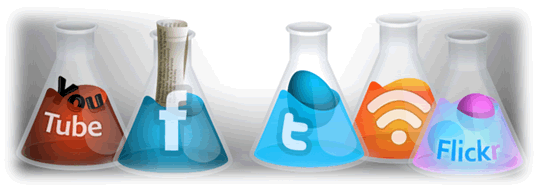|
Latest article
Commemorating Youth Day by exploring social media tools
|
Summary
South Africans commemorate Youth Day on 16 June. This article highlights the need for young people to maintain accurate knowledge on HIV/AIDS. Social media tools are excellent youth-friendly conduits for young people to express themselves, share their thoughts and learn about HIV/AIDS.
|
Youth Day celebrated across the world
Many countries in the world celebrate youth day. For instance, in India Youth Day observes the birthday of Swami Vivekananda, whose ideals serve as inspiration to the Indian youth. International Youth Day, arranged by the United Nations, aims to create global awareness of cultural and legal issues affecting the youth. In South Africa (SA), Youth Day annually commemorates the Soweto Uprising on 16 June, triggered in 1976 by a government proclamation for the use of Afrikaans as instruction language for some subjects in black schools. Initial peaceful protests soon escalated out of control leading to the death of some young people. This day now recognises the contribution of the youth in the liberation of South Africa from apartheid.
South African statistics on young people
- In total, SA's population of 50 million mostly consists of young people, with 77.6% younger than 35 years (UNFPA, 2013). The South African National Youth Policy defines youth as individuals between the ages 14-35 years (Government of the Republic of SA, 2009).
- The number of people living with HIV in SA constitutes 6.1 million (UNAIDS, 2012). There are 410 000 children between the ages 0-14 years living with HIV; and 2.5 million AIDS orphans between the ages 0-17 years.
- In the age group 15-24 years the HIV prevalence among women is 11.9% and 5.3% among men (UNAIDS, 2012).
- In SA, young people are confronted by high levels of gender-based violence.
Knowledge on HIV/AIDS
Recent literature refers to the alarming decline in HIV/AIDS knowledge among South African youth. According to the UNFPA (2013), young people struggle to explain HIV transmission, while Mayosi et al. (2012) identified a lack of knowledge and denial of HIV status as a major barrier to HIV prevention and treatment.
|
Log in to AfroAIDSinfo to find articles and fact sheets on the basics of HIV/AIDS, testing and prevention in the Public category / Facts
|
 Youth-friendly services and tools on HIV/AIDS Youth-friendly services and tools on HIV/AIDS
The UNFPA (2013) identified the youth's preference of social media as appropriate platforms to reach young people with knowledge on risks for HIV infection. In this context, Young and Rice (2010) investigated if associations exist between online social networking and sexual health behaviours among homeless youth. According to their findings, young people using online social media to discuss love and safe sex tend to have increased HIV knowledge. In fact, simply by belonging to an online social media tool suggests having undergone tests for sexually transmitted infections. This research strongly advises using social media tools to influence young people by providing sexual health information through these tools.
Encourage young people to visit the social media tools below to increase their HIV knowledge while socialising online.
!
This is a Facebook presence of the UNAIDS inviting young people to share their own stories in order to motivate others on HIV prevention, starting with a feature of Remmy on YouTube.
Listen to the YouTube video sharing information on young people's vulnerability to HIV infection.
A campaign by the Centre for Diseases Control (CDC) encourages HIV discussions between gay men on HIV prevention.
Blog: Half the World
Visit the collection of blogs by the Interagency Youth Working Group to learn more and join discussions on a range of topics for adolescents. Topics cover youth perspectives on post-abortion care, menstrual hygiene care, education on sex and more.
Read the story on the Safe sex dance by Ethiopian youth to encourage discussions on HIV prevention – and add your ideas.
New media tools
Visit this site to learn about new social media tools and apply it to engage the youth to increase HIV knowledge.
To conclude
HIV is a virus;
It's nothing like sinus.
You can get it by sexual intercourse
between men and ladies,
or infected mothers to unborn babies.
Through infected needle injections;
HIV can cause many infections.
To have HIV doesn't mean you're bad;
Just sometimes, it makes you feel a little sad.
There are days you might ask yourself, “Why?”
But as long as there are loving and caring people you'll never cry!
And eat as much healthy food;
And remember to persevere in doing good!
- South African learner (Source: AfroAIDSinfo)
References
- Government of the Republic of South Africa. (2009) National Youth Policy 2009-2014. [Online] (Accessed 26 May 2014).
- Mayosi, B. M., Lawn, J. E., van Niekerk, A., Bradshaw, D., Abdool Karim, S., Coovadia, H. (2012) Health in South Africa: changes and challenges since 2009. The Lancet, 380, pp. 2029-2043.
- UNAIDS. (2012) HIV and AIDS estimates [Online] (Accessed 26 May 2014).
- United Nations Population Fund (UNFPA). (2013) Youth [Online] (Accessed 26 may 2014).
- Young, S.D. and Rice, E. (2010) Online Social Networking Technologies, HIV Knowledge, and Sexual Risk and Testing Behaviors Among Homeless Youth. AIDS and Behavior, DOI: 10.1007/s10461-010-9810-0.
Author: Hendra van Zyl (MPH)
Reviewed by: Jodilee Erasmus (B.Soc Sci), Jean Fourie (MPhil) and Michelle Moorhouse (MBBCh, DA)
Contact:
Date: June 2014
Preferred citation
Van Zyl, H. (2014) Commemorating Youth Day by exploring social media tools, AfroAIDSinfo. Issue 14 no. 6, Public (Open access).
Last updated: 31 May, 2014
|
